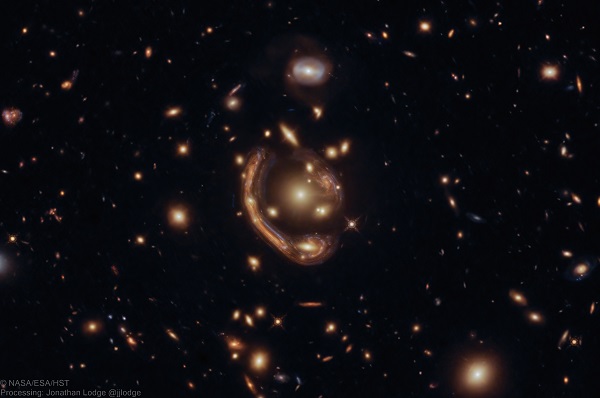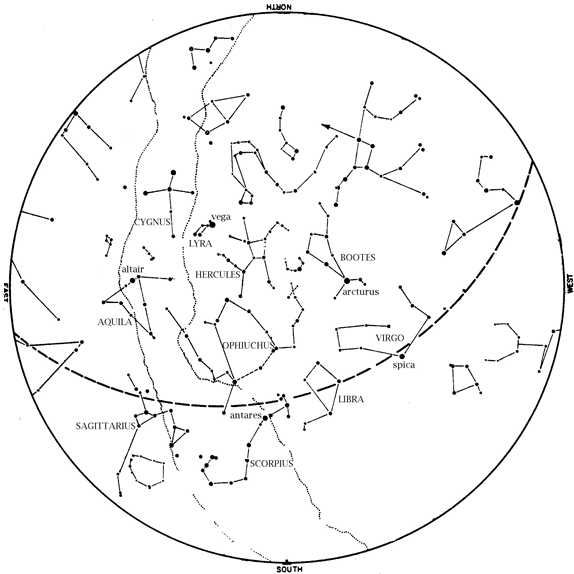Editor’s Note: HMNS Astronomer James Wooten shines a light on the July 2022 sky happenings.
Venus remains in the morning sky this month. Venus outshines everything except the Sun and the Moon, so you can try to find it low in the east at dawn. Venus remains a ‘morning star’ for most of 2022.
Mars is higher in the morning sky this month.
Jupiter is also in the morning sky this month. You can see it in the east at dawn.
Saturn is now low in the south-southwest before dawn. By the 31st, though, Saturn is also visible in late evening. Next month, it is up literally all night long.

Image Credit: ESA/Hubble & NASA, S. Jha; Processing: Jonathan Lodge
Spring stars are high in the south and west. A distinct backwards question mark shape outlines the mane and forepaws of Leo, the Lion. Three stars forming a right triangle are to its upper left; they mark Leo’s hindquarters. The Big Dipper is as high as it ever gets in the north at dusk. You can extend the curve of its handle to ‘arc to Arcturus’ and then ‘speed on to Spica’. These stars high in the east and south, respectively, by dusk tonight. Arcturus, by the way, is the fourth brightest star we ever see at night, but the brightest one Americans ever see in all of July.
In the east, look for the enormous Summer Triangle, consisting of the stars Deneb, Vega, and Altair. This triangle is up all night long in July, hence its name. Scorpius, the Scorpion, is in the south at dusk. Sagittarius, the Archer, known for its ‘teapot’ asterism, is to Scorpius’ left.

The Summer Triangle is high in the east. This consists of the brightest stars in Cygnus, Lyra, and Aquila. Scorpius, the Scorpion, is in the south, with the ‘teapot’ of Sagittarius to his left. Leo, the Lion, sets in the west. From the Big Dipper’s handle, ‘arc to Arcturus’ and ‘speed on to Spica’ in the southwest.
Moon Phases in July 2022:
1st Quarter July 6, 9:14 p.m.
Full July 13, 1:37 p.m.
Last Quarter July 20, 9:18 a.m.
New July 28, 12:55 p.m.
At 9:59 pm CDT on Sunday, July 3, the Earth is at aphelion, which means it is as far away from the Sun as it will get this year. That greater distance is not doing much to cool us off, however. Why not? Bear in mind that Earth’s orbit is almost a perfect circle, with an eccentricity (out of roundness) of only 1.6%. This variation in the Earth-Sun distance is too small to affect our weather. Earth’s 23.44 degree tilt produces a much bigger effect. Our hemisphere is very much tilted towards the Sun in July, so we swelter in summer heat.
Stargaze with the Houston Museum of Natural Science all summer long at The George Observatory.
Take a look back at June 2022 Sky Happenings here.
Clear Skies!






